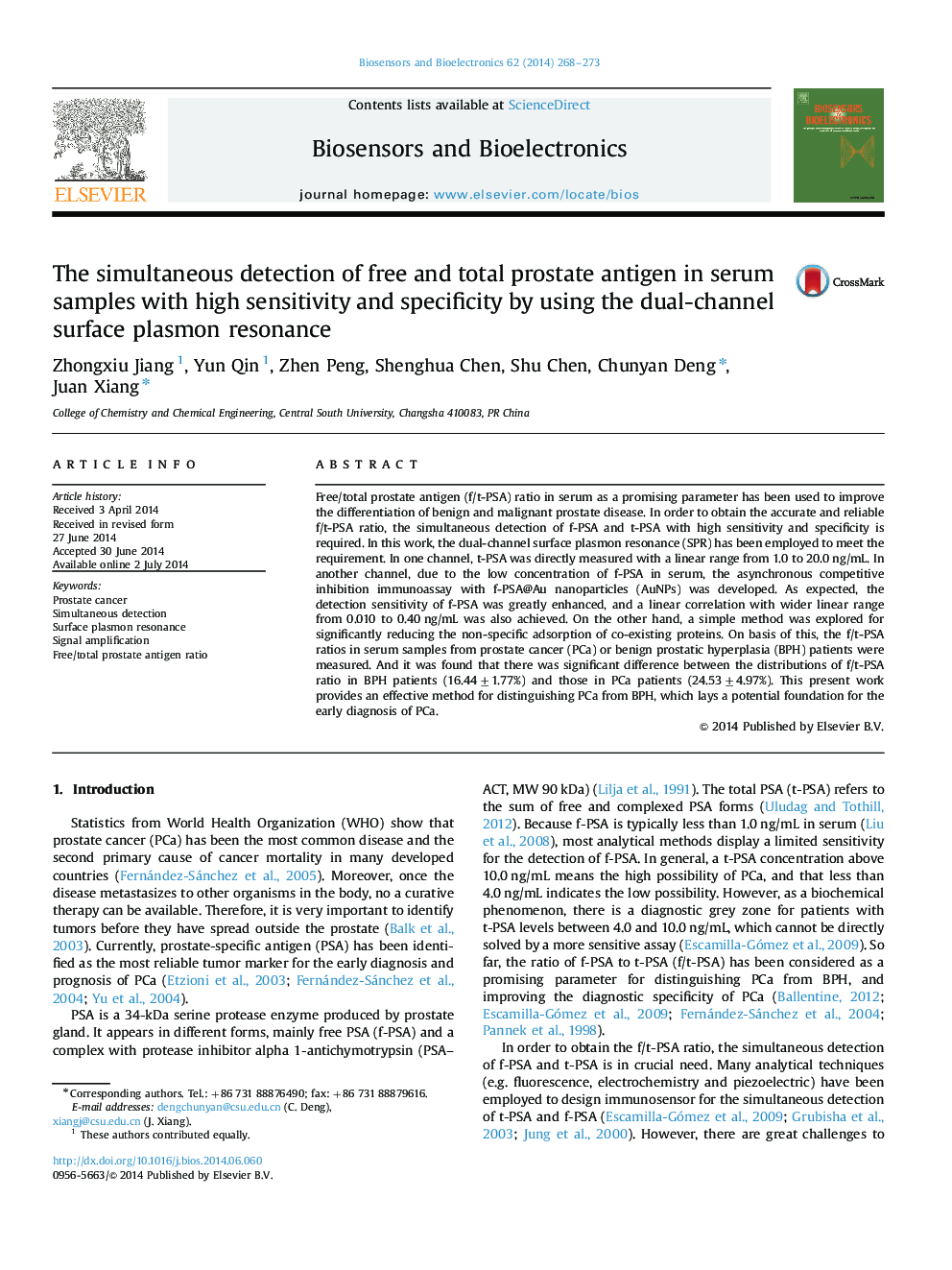| Article ID | Journal | Published Year | Pages | File Type |
|---|---|---|---|---|
| 7233126 | Biosensors and Bioelectronics | 2014 | 6 Pages |
Abstract
Free/total prostate antigen (f/t-PSA) ratio in serum as a promising parameter has been used to improve the differentiation of benign and malignant prostate disease. In order to obtain the accurate and reliable f/t-PSA ratio, the simultaneous detection of f-PSA and t-PSA with high sensitivity and specificity is required. In this work, the dual-channel surface plasmon resonance (SPR) has been employed to meet the requirement. In one channel, t-PSA was directly measured with a linear range from 1.0 to 20.0 ng/mL. In another channel, due to the low concentration of f-PSA in serum, the asynchronous competitive inhibition immunoassay with f-PSA@Au nanoparticles (AuNPs) was developed. As expected, the detection sensitivity of f-PSA was greatly enhanced, and a linear correlation with wider linear range from 0.010 to 0.40 ng/mL was also achieved. On the other hand, a simple method was explored for significantly reducing the non-specific adsorption of co-existing proteins. On basis of this, the f/t-PSA ratios in serum samples from prostate cancer (PCa) or benign prostatic hyperplasia (BPH) patients were measured. And it was found that there was significant difference between the distributions of f/t-PSA ratio in BPH patients (16.44±1.77%) and those in PCa patients (24.53±4.97%). This present work provides an effective method for distinguishing PCa from BPH, which lays a potential foundation for the early diagnosis of PCa.
Related Topics
Physical Sciences and Engineering
Chemistry
Analytical Chemistry
Authors
Zhongxiu Jiang, Yun Qin, Zhen Peng, Shenghua Chen, Shu Chen, Chunyan Deng, Juan Xiang,
